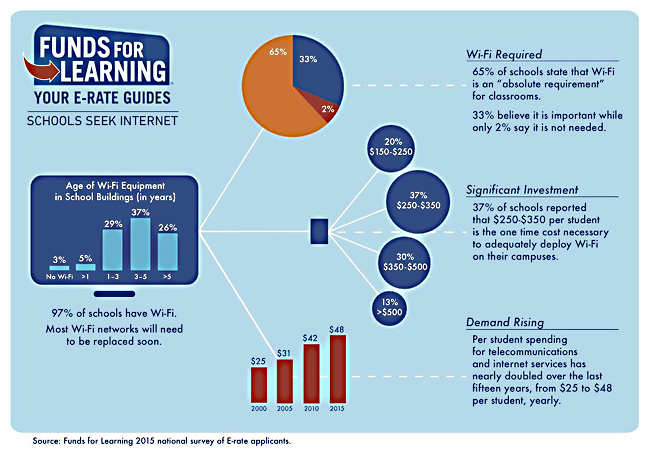Why Most School Wi-Fi Networks Are Not Prepared for the Future
The E-Rate application season has started. From now until April 30, K–12 IT departments will be busy filing their requests for technology to help bring their districts into a steady online future.
In 2014, the Federal Communications Commission upgraded its E-Rate funding program with a larger funding cap, allowing schools to upgrade more hardware and boost Internet speeds in classrooms, opening the doors for online learning. The effort went hand in hand with President Barack Obama's ConnectED initiative, which began in 2013 as a plan to provide high-speed Internet access to 99 percent of classrooms by 2018.
A 2015 survey showed that state public schools still have a long way to go, but progress is made each year. Last year's E-rate funding requests totaled $3.9 billion, according to the FCC. This year, requests are expected to go even higher, says John Harrington, CEO of the E-rate consulting firm Funds for Learning.
"Since there is a potential of $5.8 billion in E-rate funding for 2016, it’s more important than ever to recognize the realities of digital learning and make use of funds to increase connectivity," he says.
Most districts have been utilizing E-Rate for years, but their wireless infrastructure might not be ready for the future, according to an infographic from Funds for Learning.

Based on a national survey of E-Rate applicants by the organization, 97 percent have Wi-Fi, but most of this equipment will need to be replaced soon due to their age. Most respondents (63 percent) said their Wi-Fi equipment was more than three years old.
In addition to replacing older hardware through E-Rate, some districts lack a solid fiber connection into their schools — particularly in rural districts. This year, E-rate will provide districts with funding to help build new fiber networks they previously could only access through local Internet providers. It's one of the new options afforded through the modernized E-rate program, says Harrington.
Districts seeking more information about applying for E-Rate can explore the USAC’s online guide.









